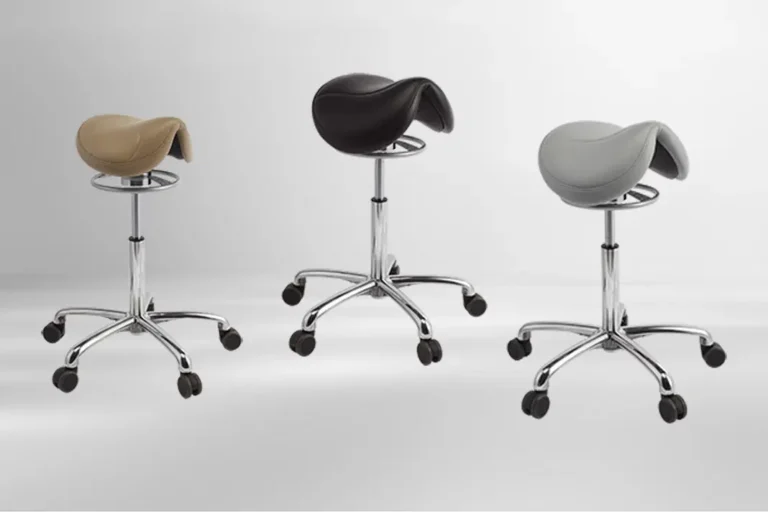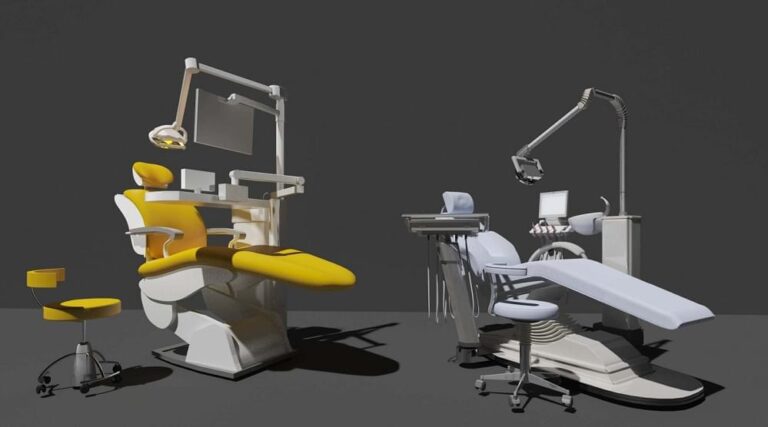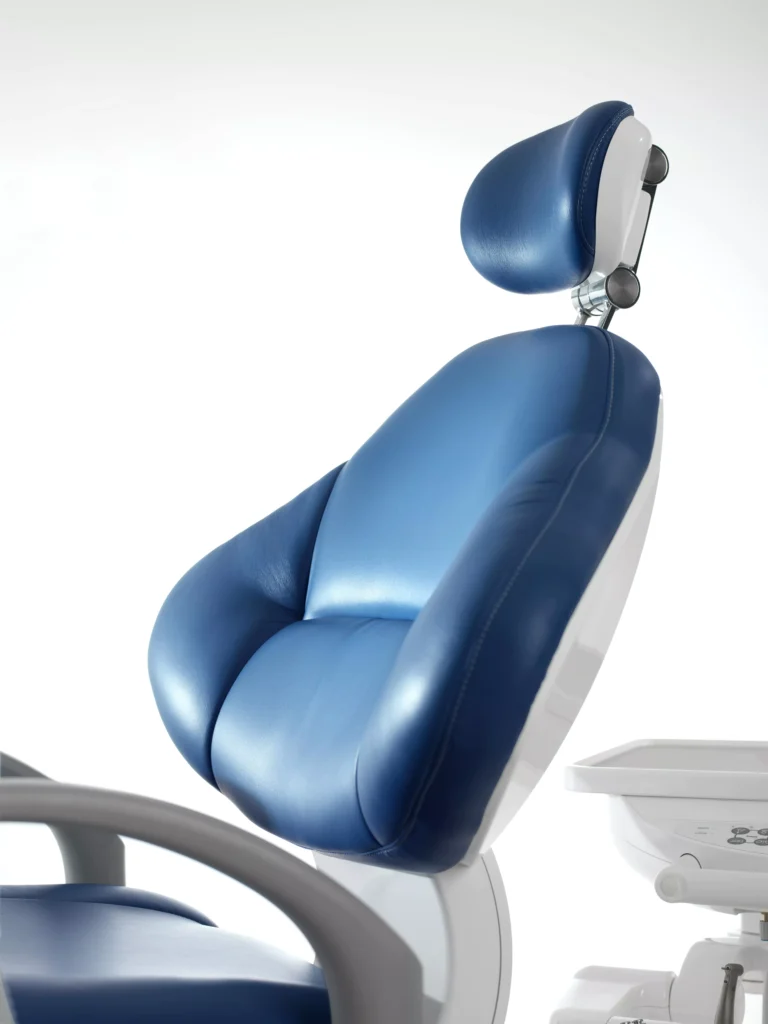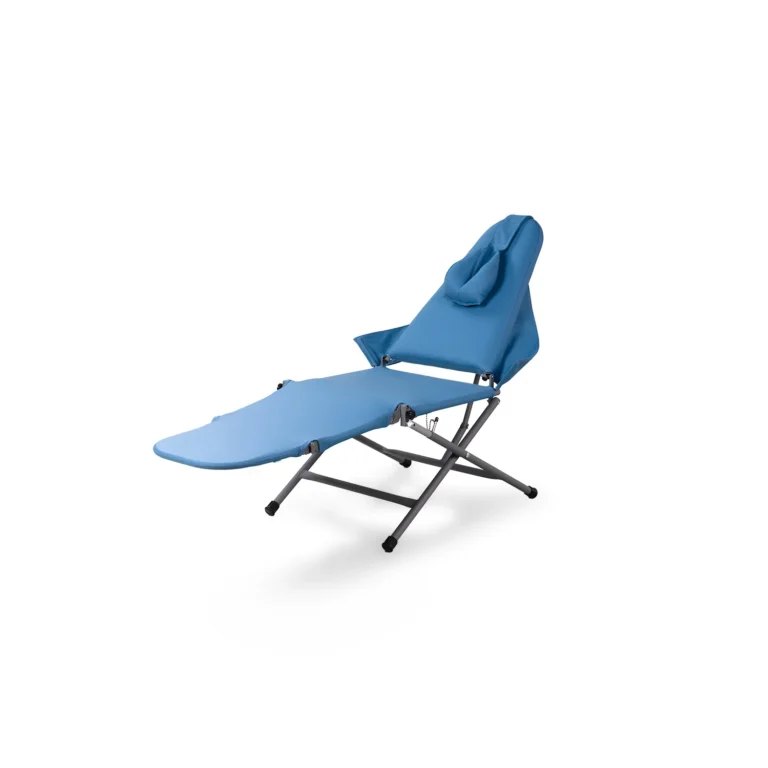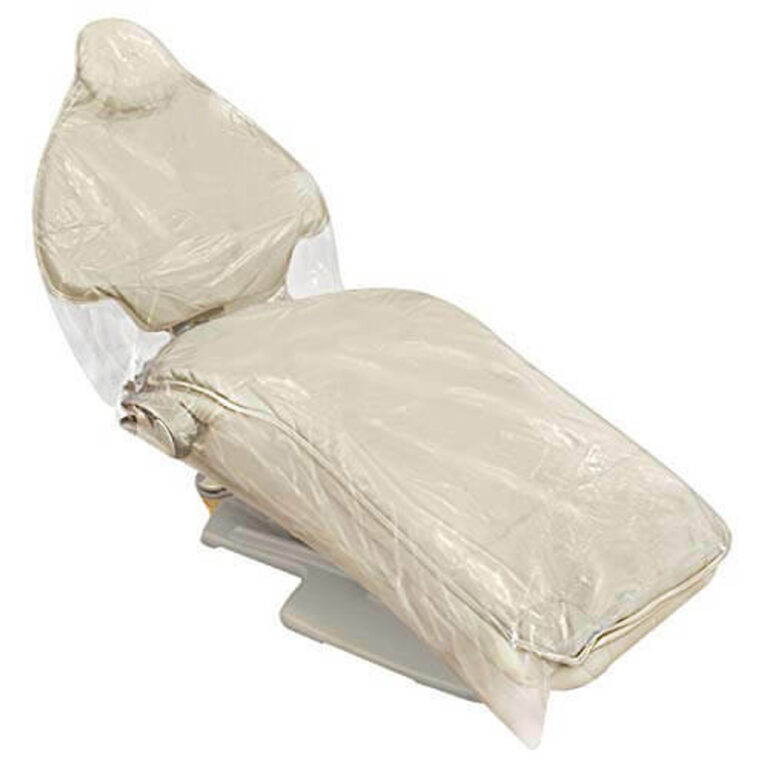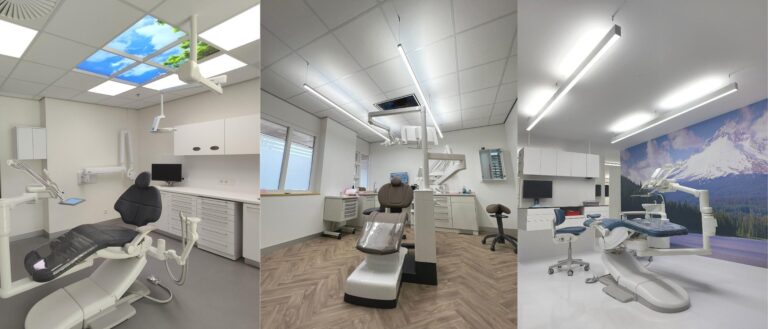In the fast-paced world of dentistry, where precision and comfort are paramount, ergonomics plays a crucial role in ensuring the well-being and longevity of dental professionals. As we step into 2024, a revolutionary seating solution has taken the dental industry by storm: saddle chairs. These innovative chairs are transforming the way dentists and hygienists work, offering unparalleled ergonomic benefits that enhance comfort, reduce fatigue, and improve overall performance. In this comprehensive guide, we will explore the groundbreaking features of saddle chairs and how they are revolutionizing dental ergonomics in 2024.
Understanding Saddle Chairs: A Game-Changer in Dental Seating
Saddle chairs, named after their resemblance to horseback riding saddles, have emerged as a game-changer in the dental seating market. Unlike traditional dental chairs that often lead to poor posture and discomfort, saddle chairs are designed to promote a natural, upright sitting position. By allowing the pelvis to tilt forward, saddle chairs enable dental professionals to maintain a neutral spine alignment, reducing the risk of back pain and musculoskeletal disorders.
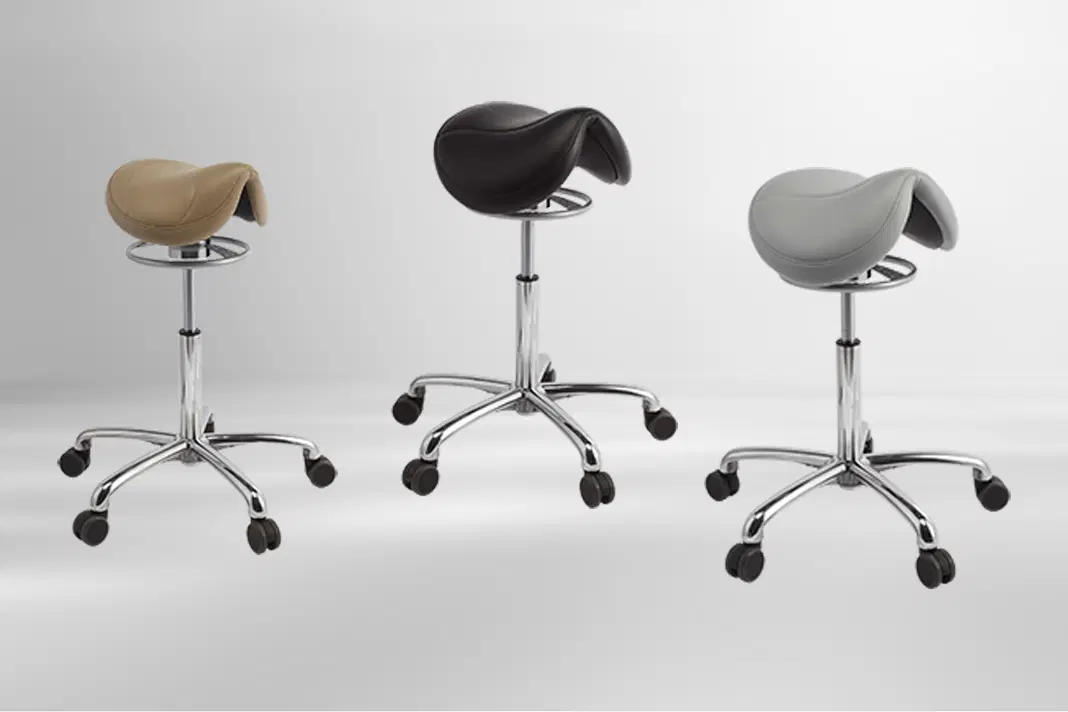
The unique design of saddle chairs features a contoured seat that supports the body’s natural curves, distributing weight evenly and minimizing pressure points. This ergonomic design encourages a more open hip angle, allowing for better circulation in the legs and reducing the likelihood of numbness or tingling sensations. With adjustable height and tilt options, saddle chairs can be customized to fit the specific needs of each dental professional, ensuring optimal comfort and support throughout long procedures.
Ergonomic Benefits of Saddle Chairs: Enhancing Comfort and Performance
- Improved Posture and Spinal Alignment
One of the most significant advantages of saddle chairs is their ability to promote proper posture and spinal alignment. Traditional dental chairs often force practitioners into a hunched or slouched position, leading to increased strain on the back, neck, and shoulders. In contrast, saddle chairs encourage an upright sitting posture, aligning the spine in its natural S-curve. This neutral alignment reduces the risk of developing musculoskeletal disorders, such as lower back pain, which is a common complaint among dental professionals. - Reduced Muscle Fatigue and Discomfort
Dental procedures often require prolonged periods of sitting, which can lead to muscle fatigue and discomfort. Saddle chairs address this issue by promoting a more active sitting position, engaging the core muscles and reducing the strain on the back and legs. The forward tilt of the pelvis on a saddle chair allows for better weight distribution, minimizing pressure points and preventing the buildup of tension in specific muscle groups. This increased comfort translates to improved focus and productivity, as dental professionals can work for longer periods without experiencing pain or fatigue. - Enhanced Mobility and Reach
Saddle chairs offer unparalleled mobility and reach, allowing dental professionals to easily maneuver around the patient and access different areas of the mouth. The open hip angle promoted by saddle chairs enables practitioners to sit closer to the patient, reducing the need for excessive reaching or stretching. This improved proximity not only enhances precision and control during procedures but also reduces the risk of developing repetitive strain injuries. With the ability to swivel and adjust the chair’s height, dental professionals can maintain an optimal working position throughout the day, minimizing physical strain and maximizing efficiency. - Improved Circulation and Blood Flow
Traditional dental chairs can restrict blood flow to the legs, leading to numbness, tingling, and discomfort. Saddle chairs, on the other hand, promote better circulation by allowing the legs to hang naturally, with the feet resting on the floor or on a footrest. This position encourages blood flow to the lower extremities, reducing the risk of developing circulatory issues such as deep vein thrombosis (DVT). By maintaining proper circulation, dental professionals can experience increased energy levels and improved overall well-being, even during long and demanding procedures.
Choosing the Right Saddle Chair: Factors to Consider
- Adjustability and Customization
When selecting a saddle chair, it is crucial to consider its adjustability and customization options. Look for chairs that offer a wide range of height adjustment, allowing you to find the perfect position for your body type and working style. Some saddle chairs also feature adjustable tilt mechanisms, enabling you to fine-tune the angle of the seat to your preference. Additionally, consider chairs with adjustable backrests or lumbar support, as these features can provide extra comfort and support during extended sitting periods. - Material and Durability
The material and durability of a saddle chair are essential factors to consider, as dental professionals spend a significant amount of time seated. Opt for chairs made with high-quality, durable materials that can withstand the rigors of daily use. Leather and vinyl upholstery are popular choices for their comfort and ease of cleaning, while memory foam padding can provide additional pressure relief. Consider chairs with sturdy metal or reinforced plastic bases to ensure stability and longevity. - Ergonomic Design and Support
When evaluating saddle chairs, pay close attention to their ergonomic design and support features. Look for chairs with contoured seats that follow the natural shape of the body, promoting proper alignment and weight distribution. Some saddle chairs incorporate a split-seat design, which allows for greater freedom of movement and reduces pressure on the perineal area. Additionally, consider chairs with built-in lumbar support or adjustable backrests to maintain the natural curvature of the spine and prevent slouching. - Brand Reputation and User Reviews
Researching brand reputation and user reviews can provide valuable insights when choosing a saddle chair. Look for well-established brands known for their commitment to ergonomics and quality craftsmanship. Read user reviews and testimonials from dental professionals who have experience with specific saddle chair models. Pay attention to feedback regarding comfort, durability, and overall satisfaction to make an informed decision. Consulting with colleagues or industry experts can also help you narrow down your options and find the best saddle chair for your needs.
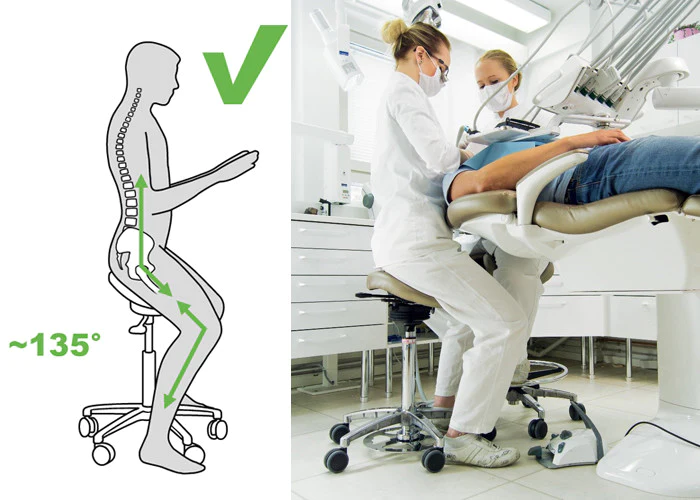
Integrating Saddle Chairs into Your Dental Practice: Tips and Considerations
- Gradual Transition and Adjustment Period
When introducing saddle chairs into your dental practice, it is essential to allow for a gradual transition and adjustment period. Switching from a traditional dental chair to a saddle chair may take some time for your body to adapt. Start by using the saddle chair for shorter periods and gradually increase the duration as you become more comfortable. Be patient with yourself and listen to your body’s feedback during this transition phase. - Proper Posture and Ergonomic Training
To fully benefit from the ergonomic advantages of saddle chairs, it is crucial to maintain proper posture and alignment while seated. Provide ergonomic training for yourself and your dental team to ensure everyone understands the correct sitting position and adjustments needed for optimal comfort. Encourage regular breaks and stretching exercises to prevent muscle fatigue and promote circulation. Incorporating ergonomic best practices into your daily routine will help you maximize the benefits of saddle chairs and maintain a healthy working environment. - Complementary Ergonomic Equipment
While saddle chairs are a significant step towards improving dental ergonomics, they work best when combined with other ergonomic equipment. Consider investing in adjustable dental loupes or microscopes to maintain a neutral neck position and reduce eye strain. Utilize ergonomic handpieces and instruments that minimize hand and wrist fatigue. Incorporating a mix of sitting and standing positions throughout the day can also help alleviate the effects of prolonged sitting and promote overall well-being. - Regular Maintenance and Replacement
To ensure the longevity and effectiveness of your saddle chairs, establish a regular maintenance and replacement schedule. Periodically inspect the chairs for signs of wear and tear, such as frayed upholstery or loose components. Follow the manufacturer’s guidelines for cleaning and maintaining the chairs to keep them in optimal condition. Consider replacing saddle chairs every 5-7 years, or sooner if they show significant signs of deterioration, to ensure ongoing ergonomic benefits and maintain a professional appearance in your dental practice.
The Future of Dental Ergonomics: Embracing Innovation
As we look towards the future of dental ergonomics, saddle chairs are just the beginning of a new era of innovation and comfort. Manufacturers are continuously developing advanced seating solutions that incorporate cutting-edge materials, smart technology, and customizable features. From chairs with built-in massage functions to those with intelligent weight distribution sensors, the possibilities are endless.
In addition to seating innovations, the dental industry is witnessing a surge in ergonomic advancements across various equipment and instruments. Lightweight, cordless handpieces, ergonomically designed dental trays, and adjustable patient chairs are just a few examples of how manufacturers are prioritizing the well-being of dental professionals. By staying informed about the latest ergonomic developments and investing in innovative solutions, dental practices can create a work environment that promotes comfort, efficiency, and long-term health.
Conclusion: Embracing the Saddle Chair Revolution
As we navigate the ever-evolving landscape of dentistry in 2024, saddle chairs have emerged as a revolutionary solution to the ergonomic challenges faced by dental professionals. By promoting proper posture, reducing muscle fatigue, enhancing mobility, and improving circulation, saddle chairs are transforming the way dentists and hygienists work. Embracing this ergonomic revolution not only benefits the well-being of dental professionals but also translates to improved patient care and satisfaction.
When selecting a saddle chair, consider factors such as adjustability, material quality, ergonomic design, and brand reputation. Incorporate a gradual transition period and provide ergonomic training to ensure a smooth adoption of this innovative seating solution. By combining saddle chairs with other ergonomic equipment and best practices, dental practices can create a work environment that prioritizes comfort, efficiency, and long-term health.
As we look towards the future, it is clear that ergonomics will continue to play a pivotal role in shaping the dental industry. By staying informed about the latest advancements and embracing innovative solutions like saddle chairs, dental professionals can stay ahead of the curve and provide the highest level of care to their patients. The saddle chair revolution is here, and it is time for the dental community to embrace this transformative change for a healthier, more comfortable future.
References:
- Dental Economics – Saddle Chairs: A Comfortable and Ergonomic Seating Solution
- Journal of Dental Hygiene – Ergonomic Benefits of Saddle Chairs in Dental Hygiene Practice
- Dentistry Today – Improving Posture and Reducing Pain with Saddle Chairs
What are Saddle Chairs for Dental Professionals?
Saddle Chairs for Dental Professionals are specially designed chairs that mimic the posture of horseback riding. They promote a healthier sitting position, reducing the risk of musculoskeletal disorders among dental professionals, and provide a comfortable experience for patients during dental procedures.
How do Saddle Chairs enhance comfort for dental professionals?
Saddle Chairs enhance comfort by promoting a natural, upright posture. This reduces strain on the back, neck, and shoulders. The design also allows for closer proximity to the patient, improving the dentist’s reach and visibility during procedures, thereby reducing fatigue.
What are the ergonomic benefits of Saddle Chairs for dental professionals?
The ergonomic benefits of Saddle Chairs for dental professionals include improved posture, reduced risk of musculoskeletal disorders, and increased comfort during long procedures. The design of these chairs promotes an upright sitting position, reducing strain on the back, neck, and shoulders.
How do Saddle Chairs contribute to patient care?
Saddle Chairs contribute to patient care by enabling dental professionals to perform their tasks more efficiently and comfortably. This can lead to improved patient management, quicker procedures, and a more organized workflow, all of which contribute to a better patient experience.
Where can I purchase Saddle Chairs for Dental Professionals?
Saddle Chairs for Dental Professionals can be purchased from various dental equipment suppliers, both online and in physical stores. It’s important to consider the specific needs of your dental clinic and the comfort of your dental professionals when choosing a chair. Always ensure to check the product specifications and reviews before making a purchase.

